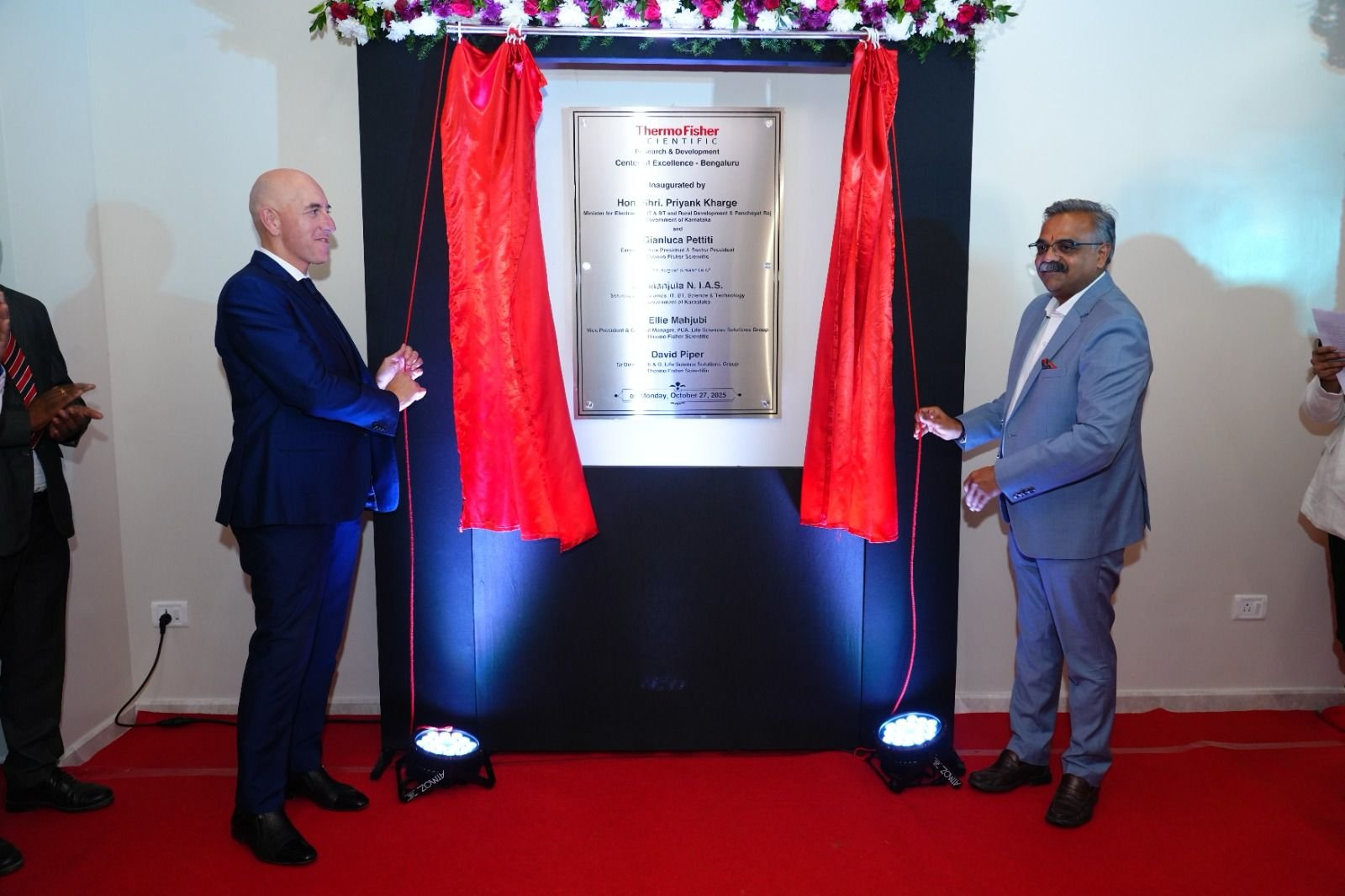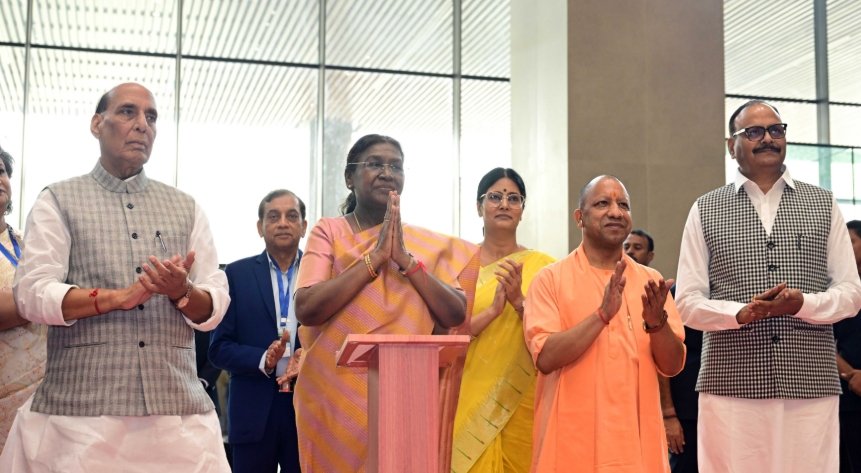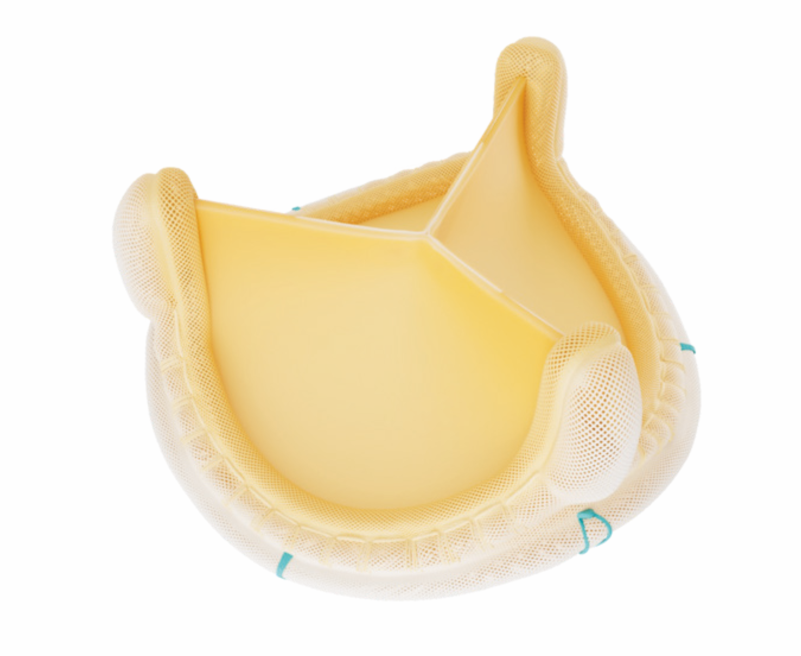“When domestic and global players stand together, it strengthens the entire diagnostics ecosystem”
October 31, 2025 | Friday | Views | By Sanjiv Das
The Association of Diagnostics Manufacturers of India (ADMI), the apex body representing the country’s in vitro diagnostics (IVD) industry, has announced the election of Jatin Mahajan, Managing Director of J. Mitra & Co., as its new President recently. In an interaction with BioSpectrum India Mahajan explains how ADMI can create inclusive working groups and open forums within the association, allowing MNCs and Indian firms to share perspectives and align on goals.
Being the newly appointed president of the ADMI, how do you foresee the future of India's diagnostic sector?
I am optimistic about the future of India’s diagnostic sector. We’re at a juncture where diagnostics are rightly being recognised as a cornerstone of healthcare. In the coming years, I see India becoming a global hub for affordable, high-quality diagnostics. Our industry is growing at a double-digit rate, and I anticipate that momentum will continue. More Indian companies will move up the value chain – not just making basic kits, but developing sophisticated molecular diagnostics, AI-driven testing tools, and even exporting lab automation systems.
The Promotion of Research and Innovation in the Pharma-MedTech Sector (PRIP) will catalyse increased spending on R&D, and we anticipate the resultant positive outcomes in the years to come. With initiatives like the PLI scheme creating “global champion” IVD firms out of India, we will have a stronger manufacturing base and innovation pipeline.
Domestically, diagnostics will penetrate deeper: I expect a laboratory or point-of-care facility in every small town, enabled by cost-effective tech developed here. From a global perspective, India’s reputation as an exporter of reliable diagnostic products will be solidified – we’re already seeing our export growth outpace imports. This trend should enable us to become net exporters by the end of the decade. As ADMI President, I plan to push for all the necessary enablers to realise this vision.
The future is one where Indian-developed diagnostic tests and devices are used worldwide, and every citizen has access to timely and accurate tests at home. In short, the outlook is of robust growth and innovation, with India’s diagnostics sector attaining a position of global leadership while saving millions of lives through early and precise disease detection.
How big and diverse is the IVD market in India?
The Indian IVD market is currently valued at roughly $1.5–2 billion and is growing steadily. This growth is fuelled by rising healthcare needs, greater preventive testing, and government incentives (like the PLI scheme and the PRIP scheme). Within this market, we have a mix of global giants and homegrown leaders. Multinational players, including Roche Diagnostics, Abbott, Siemens Healthineers, and others, have a strong presence in the country. Notable Indian companies making their mark include J Mitra & Co., Transasia Bio-Medicals and Agappe Diagnostics (long-standing domestic leaders), as well as innovators such as Molbio Diagnostics and Trivitron. These Indian firms are rapidly expanding their product portfolios and exports. In short, the IVD space in India is sizeable and growing, with global firms bringing in advanced technologies and Indian firms leveraging local expertise to compete and collaborate in meeting India’s diagnostic needs.
How many members are currently on board with ADMI? What's your strategy for the unification of both domestic and global players under a common industry platform?
ADMI currently has around 80–90 member companies on board, representing the gamut of India’s IVD industry. This includes both domestic manufacturers and Indian subsidiaries of global companies with manufacturing sites in India, all under one platform. As the newly elected President, I’m committed to uniting both domestic and international players in our sector. We will lobby with a single, strong voice on common issues – whether it is regulatory reforms, quality standards, or tax rationalisation. My approach is to create inclusive working groups and open forums within ADMI, allowing MNCs and Indian firms to share perspectives and align on goals. By presenting a unified industry front, we can more effectively engage with policymakers and regulators. The aim is to ensure a level playing field and growth opportunities for all. In practice, this means engaging in regular dialogues with the government as a unified team, jointly advocating for supportive policies, and sharing best practices across the membership. When domestic and global players stand together, it strengthens the entire diagnostics ecosystem.
Having stiff competition with the MNC IVD players, Indian players are falling behind. How do you plan to leverage local capabilities to gain ground in the market?
The opportunity is clear: a large domestic market, strong biotechnology talent, and a maturing regulatory framework. Indian firms can win by owning core reagents, engineering dependable CLIA/ELISA systems, and offering service footprints that multinationals struggle to match in tier-II/III India. There has been an increase in the number of vendors available for critical components due to various government policies implemented in recent years, which have created a conducive vendor ecosystem. The challenge is to compete on reliability, not just price: tighter process controls (QMS), robust validation data, and on-time service.
Globally, customers look for standards compliance, predictable supply, and transparent documentation. Indian manufacturers must invest in global registrations (e.g., WHO PQ where applicable, country approvals), post-market surveillance, and EQA participation. Suppose we continue to build strengths in design for manufacturability, cost-efficient scale, and field service. In that case, India can become a trusted second source and increasingly, the first choice for many healthcare systems.
Which Indian IVD firms are investing more in R&D and automation?
Several Indian IVD companies are heavily investing in R&D and automation to gain an edge. For example, Molbio Diagnostics has pioneered the Truenat platform – a portable, battery-operated real-time PCR system that brings complex molecular testing to point-of-care settings. Established players like Transasia Bio-Medicals have established advanced manufacturing and R&D centres (e.g., a new plant at AMTZ) to produce millions of test kits and analysers using indigenous technology. Companies such as J Mitra & Co. and Agappe Diagnostics continually invest in developing new reagents, rapid test formats, and automated analysers. In summary, Indian firms are pursuing R&D in areas such as molecular diagnostics, AI-driven analysis, robotics for laboratory automation, and novel immunodiagnostic techniques. The goal is to develop innovative, cost-effective diagnostic tools – ranging from next-generation test kits to fully automated laboratory instruments – that can compete globally.
In India's IVD sector, importing raw materials is often more expensive than importing finished products. What efforts would you like to have to overcome this challenge?
An inverted duty structure has indeed been hurting us – often importing raw materials is taxed more than importing finished IVD products. This creates a cost disadvantage for Indian manufacturers. To overcome this, we are advocating on multiple fronts. Firstly, we urge the government to rationalise import tariffs: reduce or eliminate duties/GST on critical raw materials (such as antibodies, enzymes, and chemicals) and, if necessary, consider a higher import duty on fully assembled diagnostic kits. This will make local assembly and manufacturing more competitive. Some of these have been partially addressed in September.
Secondly, we need to boost domestic production of raw materials. That means incentives for companies to manufacture reagents, plastics, and electronic components in India, reducing our dependence on costly imports. ADMI is striving for policies that encourage the creation of local raw material vendors. We are also advocating for newer manufacturing sites and MedTech zones with shared facilities and infrastructure. We promote R&D collaborations to develop indigenous alternatives (for example, developing native enzyme production). In short, by correcting tax anomalies and establishing a local supply chain, we can reduce input costs. These efforts, combined with government support, will make Indian IVD products more cost-effective and globally competitive.
What will the export scenario be by 2030?
Indian diagnostic manufacturers export widely today – depending on the size of the Indian IVD company, most Indian players ship to anywhere between 40 and 100 countries worldwide, spanning Asia, Africa, the Middle East, Latin America, and more. In terms of value, India’s overall medical device exports (which include diagnostic products) were approximately $3.8 billion in FY2023-24 (as per IBEF data), and IVD kits are a growing share of this total. Currently, Indian companies export a range of products, including immunoassay kits (for diseases such as HIV, hepatitis, and dengue), rapid test kits (for diseases like malaria and COVID-19), ELISA kits, molecular diagnostic tests (like TB PCR kits), and even some equipment (e.g., glucometers and small analysers).
By 2030, I expect our export footprint to expand significantly – likely doubling or tripling from current levels. With India becoming a medtech manufacturing hub, export revenues from diagnostics could reach $5–6 billion or more by 2030 (with the proper policy support). The export destinations will also broaden – we aim to enter more developed markets in Europe and the Americas with high-quality, affordable products.
Overall, the scenario is very optimistic: by 2030, Indian IVD products are expected to be a fixture in laboratories worldwide, renowned for their quality and value, and exports are projected to form a substantial portion of our industry’s revenue. The focus will remain on test kits and reagents (our forte), but we’ll also export more analysers and innovative point-of-care devices as our capabilities climb.
What's your take on steep tariffs on medical devices, including IVDs?
Frankly, the steep tariffs being imposed by the US on Indian medical devices (including IVDs) are very concerning. We’ve seen reports of 50 per cent aggregate duty on Indian device exports after successive tariff hikes – this is punishingly high. In my view, such tariffs are unfair and counterproductive. They make our competitively priced, high-quality products more expensive in the US, undermining our exporters. We strongly urge a re-evaluation of these tariffs. We are working with industry bodies and the Indian government to make representations on this issue. Ideally, we’d like to see a restoration of normal, lower duty rates through bilateral talks or inclusion of medtech in trade pacts. If high tariffs persist, Indian manufacturers may need to pivot to other markets or even consider localised assembly in the US – but that’s not the optimal solution. The bottom line is that free trade benefits both countries. We appeal to the US to reconsider and roll back these steep tariffs, so that patients aren’t deprived and Indian exporters can compete on an equal footing.
Your thoughts on the recent GST announcement for the diagnostics market.
The recent GST announcements for the diagnostics sector are a big positive. The GST rate on various diagnostic kits and machines has been reduced to 5 per cent, down from the previously higher slabs. I must say, this is a welcome relief that we in the industry have been lobbying for. Lowering GST on test kits, reagents, analysers, etc., will directly reduce the cost of diagnostics for laboratories and patients. It also helps manufacturers by easing cash flow (since less tax is locked in input credits).
Overall, this reform will boost the sector: affordable pricing can drive higher demand for diagnostic tests, and domestic companies will find it easier to compete with imported products (which also now carry 5 per cent GST). I appreciate the government’s move – it shows they recognise diagnostics as an essential service that merits a concessional tax rate. These tax benefits are reflected in our latest pricing. In summary, the GST reduction is excellent news – it makes diagnostics more accessible and supports the “Make in India” vision by levelling the field for local products.
What types of policy reforms and investments are you seeking in India's diagnostic sector?
We are seeking several policy reforms and investments to strengthen India’s diagnostics sector. One key request is to address the inverted duty structure – as mentioned, raw materials for IVD should have minimal import duty. In contrast, the import of finished devices could be taxed slightly more to protect local manufacturers. This will encourage domestic manufacturing. We also seek a simplified regulatory environment, including faster approvals, single-window clearances for setting up manufacturing or conducting clinical trials, and overall ease of doing business for diagnostic companies.
Another area is R&D support; policies that provide grants or incentives for research in new diagnostic technologies (for example, indigenous development of advanced tests or analysers) would be hugely beneficial. Promotion of Research and Innovation in the Pharma-MedTech Sector is a highly promising scheme launched by the government, and we hope it will yield significant dividends in the years to come. In terms of investments, we welcome schemes like the Production-Linked Incentive that incentivise local production of IVDs, and we’d like to see those expanded. The creation of medtech parks and common infrastructure is also vital – shared facilities for testing, calibration, and other purposes can help startups and smaller manufacturers grow.
We are also advocating for easier access to capital – perhaps low-interest loans or innovation funds – so that diagnostic companies can scale up production and automation. Finally, a significant reform would be in public procurement: if government healthcare programs prioritise “Make in India” diagnostic products, it will give the industry a considerable boost. Overall, we aim for a policy ecosystem that reduces costs, fosters innovation, and accelerates growth – with the government serving as a facilitator and investor in the diagnostics space alongside us.
Sanjiv Das
Sanjiv.das@mmactiv.com









